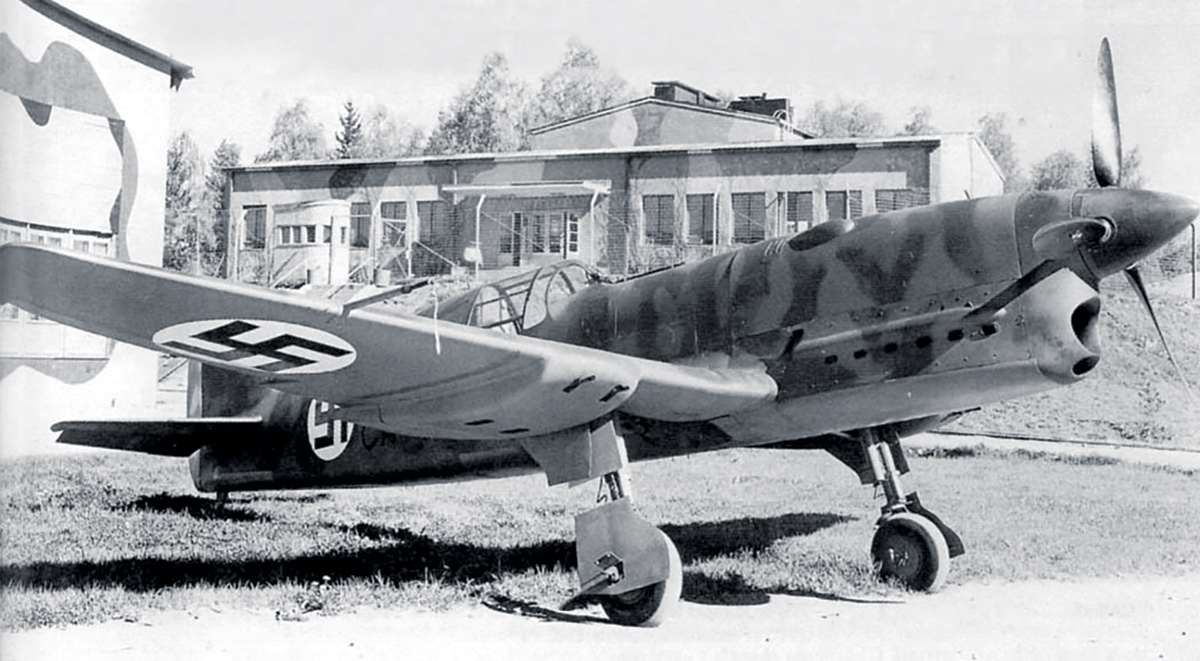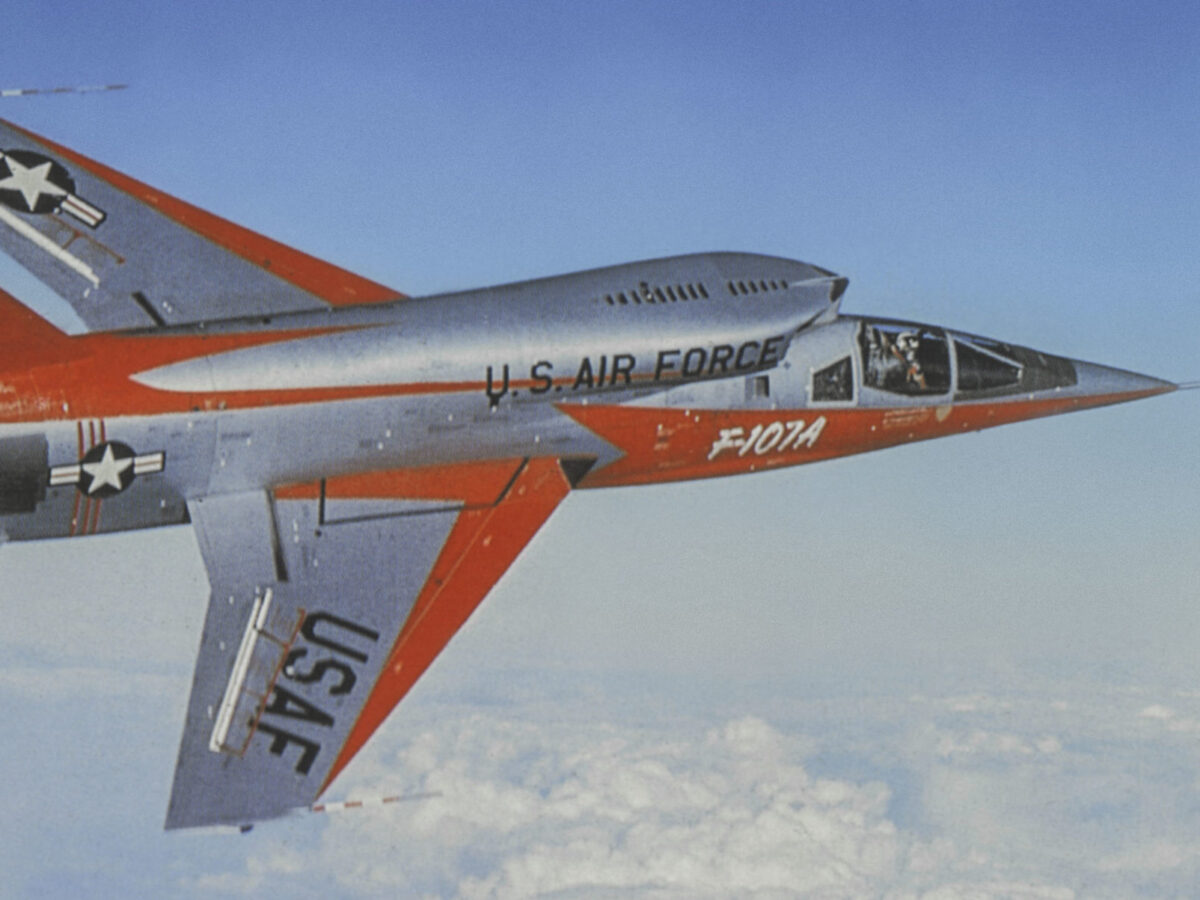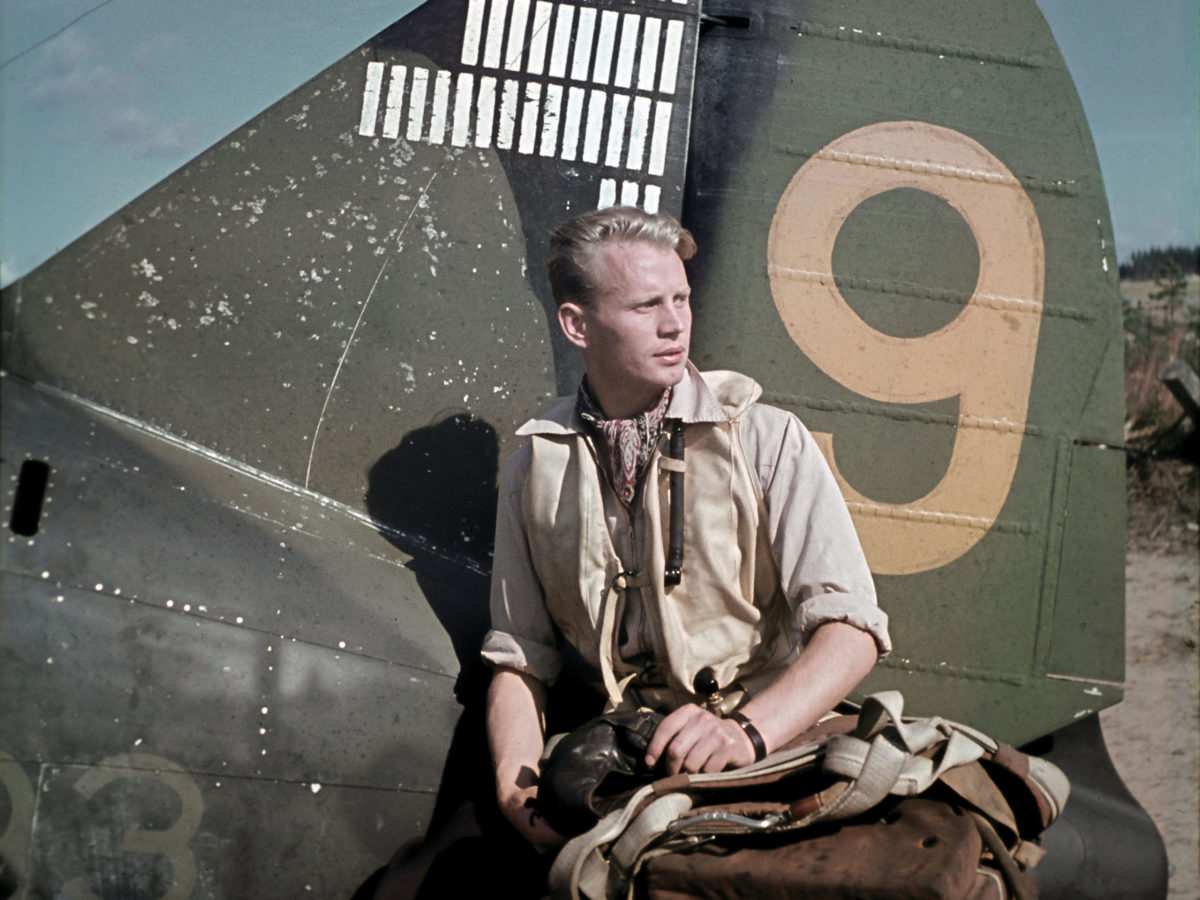Plenty of authors have expounded their own views of what were the best fighters of World War II. Fast, technologically advanced airplanes like the P-51 Mustang or the P-38 Lightning are almost certain to make such lists. Others might cite Germany’s revolutionary Me-262 jet fighter, or Britain’s Supermarine Spitfire.
Not so many have tried compiling a list of the worst fighters from the conflict, even though there are plenty of airplanes that could be nominated, from many different countries. While it may be true that no one sets out to design a bad airplane, factors outside a designer’s control can lead to unsatisfactory results. Some of these airplanes were already obsolescent before they rolled off the production line. Others suffered from the use of substandard materials in their construction. Still others were acts of desperation. And there can always be unknown factors no designer could have predicted that can derail a design that looks great on paper.
Here, then, is a modest proposal for such a list, the sort on which nobody ever wants to be included.
Brewster F2A Buffalo
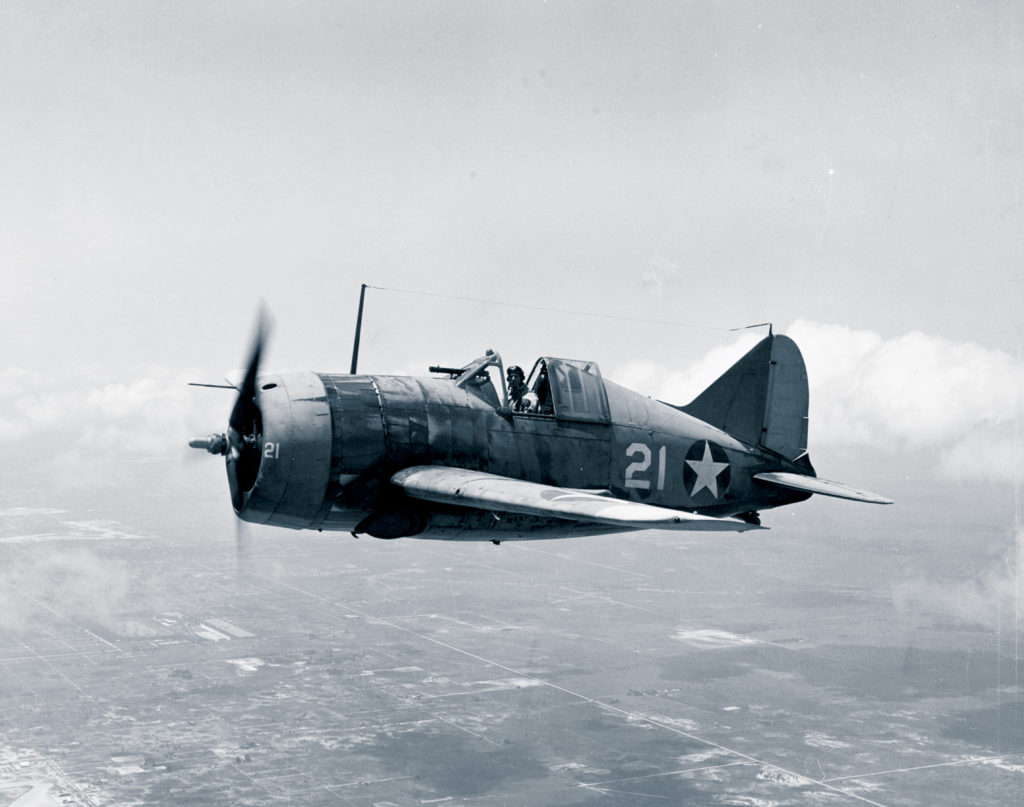
Produced by a company owned by an aviation consultant to the Navy’s Bureau of Aeronautics, this underperforming carrier-based fighter earned a disastrous reputation with the U.S. Navy, U.S. Marines and the Royal, Royal Australian and Royal Netherlands East Indies Air Forces. Only the Finns proved a spectacular exception with the B-239 export version, although that success has been attributed more to the quality of their training and doctrine — as well as the relative incompetence of their Soviet adversaries — than to the Buffalo’s merits.
Brewster Aeronautical’s management insisted that they were the victims of sabotage, but perhaps the problem was simply their own poor production methods. The factory was a multistory building in an urban area of Queens, New York, a venue hardly conducive to the production of aircraft. Components fabricated on several different floors were brought together for the final assembly. The completed aircraft then had to be disassembled and reassembled elsewhere for flight testing. In other words, for all intents and purposes, all Brewster aircraft were built twice. But perhaps that was the least of the problems with an overweight, underpowered airplane that was consistently outflown by its faster and more nimble opponents. Marines on Midway Island who were unlucky enough to fly it against Japan’s Mitsubishi A6M2 Zero called it the “Flying Coffin.”
Brewster later produced the Vought Corsair under license as the F3A-1, but it made a mess of that, too. Brewster-built Corsairs had so many quality-control issues that none were accepted for front-line service and the company finally went out of business in 1946.
GET HISTORY’S GREATEST TALES—RIGHT IN YOUR INBOX
Subscribe to our HistoryNet Now! newsletter for the best of the past, delivered every Monday and Thursday.
Fiat CR.42 Falco
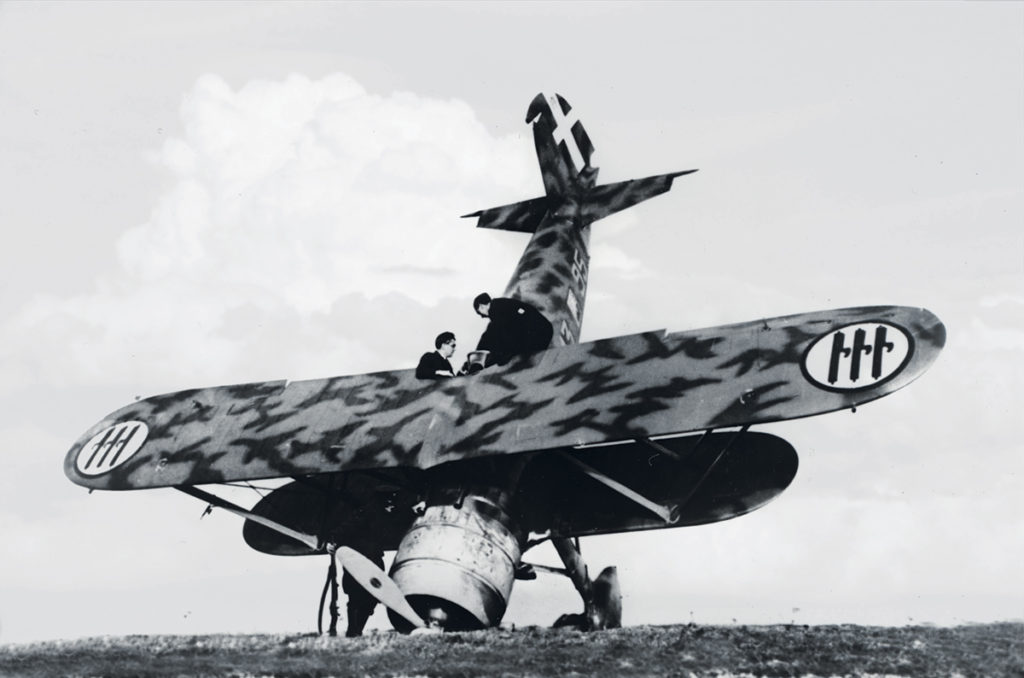
Widely used during World War II by Italy and other nations, the Fiat CR.42 is often regarded as one of the finest biplane fighters ever produced. Therein, however, lay the fatal flaw: The CR.42 was a fabric-covered, open-cockpit biplane with fixed landing gear — essentially a refinement of the standard World War I formula that was already obsolete. Much ink has been expended arguing whether the CR.42 was superior to Britain’s Gloster Gladiator. The bottom line is that the Royal Air Force considered the Gladiator, which was first flown in 1934, to be obsolete in 1939, when the CR.42 prototype first flew. Supermarine Spitfire monoplanes, 100 mph faster than the CR.42, were already widespread in RAF service by that time. The CR.42 enjoyed some initial success against British fighters, mainly because the British pilots attempted to get into maneuvering dogfights with them. Once the British figured out that their Hurricanes and Spitfires could use their superior speed and diving characteristics to defeat the Italian biplanes, they quickly turned the tables on the CR.42s.
What makes the CR.42 even more inexplicable is the fact that Fiat actually produced a successful monoplane fighter, the G.50, in 1937. Its modern features included all-metal construction, retractable landing gear and an enclosed cockpit. The G.50 entered squadron service in 1938, the year before the CR.42’s first flight. In addition, while the G.50 may not have been the fastest fighter of its time, it was still 20 mph faster than the CR.42 while powered by the same engine. It should have been obvious to anyone that the CR.42 was outdated before the first prototype took off. Yet, not only did the Regia Aeronautica order the CR.42 in quantity, but Fiat even managed to export it to Belgium, Hungary and Sweden. Fiat turned out 1,784 of these outdated biplanes, well over twice as many as the 688 G.50s that the company produced. While much has been written extolling the merits of this flying anachronism, the question remains why Fiat and the Regia Aeronautica ever bothered to develop it in the first place.
Lavochkin-Gorbunov-Gudkov LaGG-3
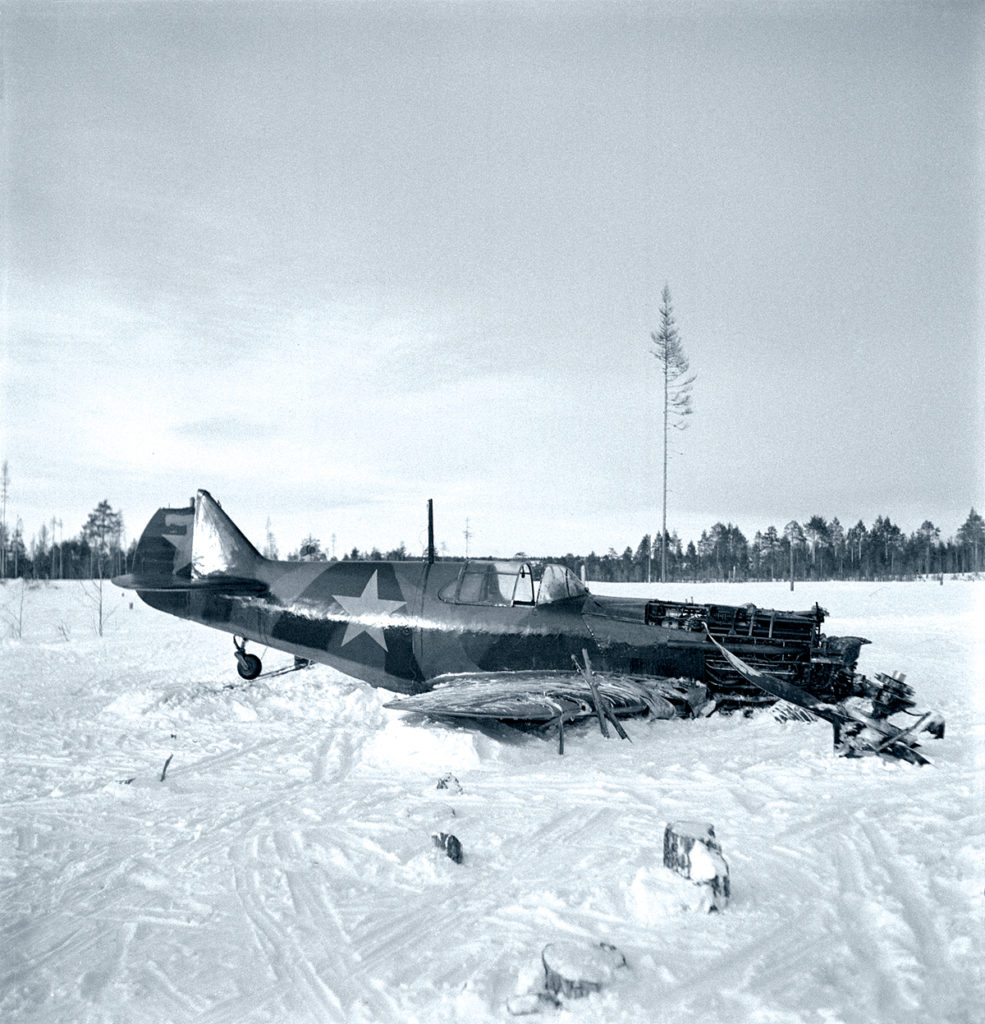
Fabricated out of resin-impregnated plywood to conserve metal, the Soviet LaGG-3 turned out heavier than planned. Its speed, rate of climb and maneuverability were inferior not only to the enemy’s Messerschmitt Me-109F, but to the Soviet Union’s own Yakovlev Yak-1, which had the same engine as the LaGG-3. Still, the Soviets produced 6,500 LaGG-3s.
The designation stood for the initials of the aircraft’s designers — Semyon A. Lavochkin, Vladimir P. Gorbunov and Mikhail I. Gudkov. The fighter earned such a poor reputation, however, that Soviet pilots joked that “LaGG” really stood for “Lakirovanny Garantirovanny Grob” (the Russian words for “varnished guaranteed coffin”).
After the departure of Gorbunov and Gudkov, Lavochkin finally managed to convert the LaGG-3 design into a viable fighter. He replaced the liquid-cooled inline engine with a more powerful air-cooled radial and introduced a number of aerodynamic and structural improvements. The result, first flown in March 1942, was the highly successful La-5.
Caudron C.714
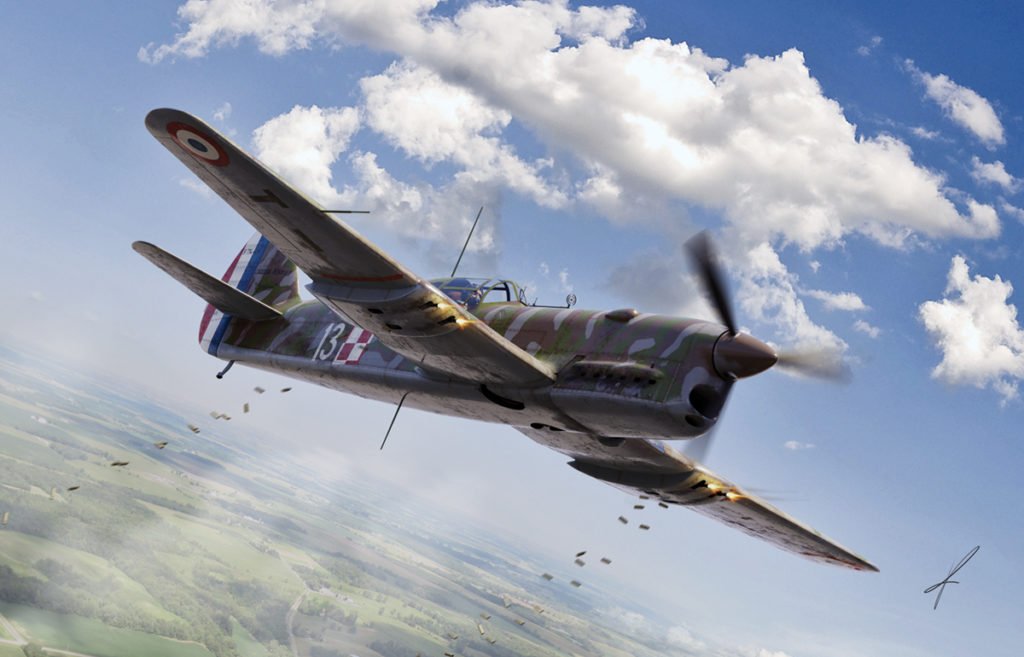
Developed from a series of racing planes of the mid-1930s, the French C.714 provides a perfect illustration of how a successful racer does not necessarily translate into a successful combat plane. It was intended as a lightweight fighter that could be built quickly and inexpensively. Four 7.5mm machine guns were slung beneath the wings in panniers, seemingly as an afterthought, but it achieved the respectable speed of 301 mph with an engine of only 450 hp. Nevertheless, the C.714 failed as a viable fighter. It had a range of only 486 miles and took more than 9½ minutes to reach its service ceiling, which was only 13,000 feet.
France sold a batch of C.714s to Finland, which, although desperate for modern fighters to use against the Soviets, rejected them. Those issued to the Armée de l’Air during the Battle of France in 1940 were so mechanically flawed that, despite the urgent need for fighters, the French Minister of War ordered it withdrawn from active service on May 25, 1940, only one week after it had been introduced. The C.714s were grounded and its production cancelled. Nevertheless, the French issued a few C.714s to a squadron of expatriate Poles eager to keep up their fight against the hated Germans with whatever was available. The Poles used them to some effect in the few remaining days of the French campaign.
Curtiss-Wright CW-21 Demon
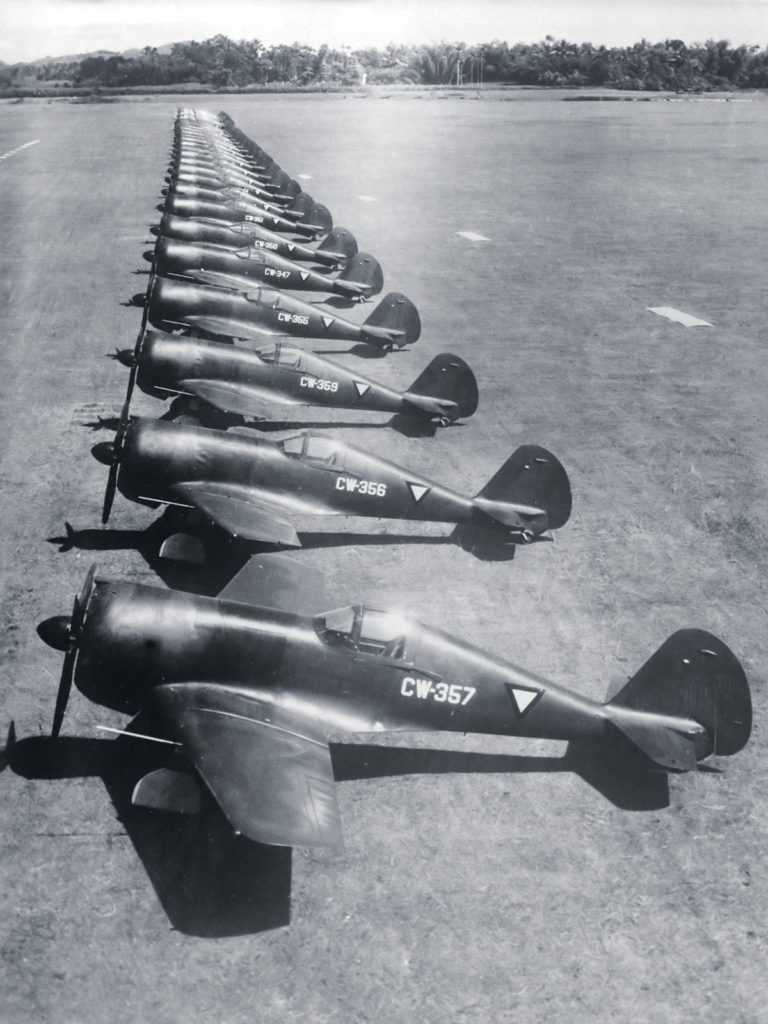
Developing a fighter from a trainer is usually an act of wartime desperation, as was the case with Australia’s Commonwealth Boomerang. The Curtiss-Wright division of the Curtiss Aircraft Corporation tried it as well before the war, when the U.S. had no such desperation. Developed in 1938 from the CW-19, a two-seat trainer with which the company achieved a certain amount of success in the export market, the CW-21 Demon was touted as the “fastest-climbing interceptor in the world.” Despite the fact that the U.S. Army Air Corps wanted nothing whatever to do with the CW-21, the company managed to sell some to China and the Netherlands. Along with the prototype, China bought three complete aircraft and 27 sets of components for assembly there. How they would have fared in combat will never be known, however, because the three production fighters crashed en route and the rest were never assembled.
Since the Netherlands was occupied by the Germans in May 1940, early in 1941 the 24 CW-21B fighters its exiled government ordered were delivered to the Dutch East Indies. Although somewhat refined with a flush-retracting landing gear instead of the “clamshell door” fairings of the original CW-21, the CW- 21B proved no match for Japan’s Zero. The Japanese army’s Ki-43 fighter, which the CW-21B also faced, has frequently been criticized as being flimsy, under-armed and lacking armor protection. Yet the CW-21B also lacked armor, was 1,000 pounds lighter and was armed with only two .30-caliber and two .50-caliber machine guns, compared with the Ki-43’s two 12.7mm machine cannons. First Lieutenant R.A.D. Anaemet, who commanded a squadron in Java, described the CW-21B as “by no means a bad aircraft but simply surpassed…in nearly every important performance category by its opponents.” All were wiped out within three months of Japan’s invasion of the East Indies.
Heinkel He-162 Salamander
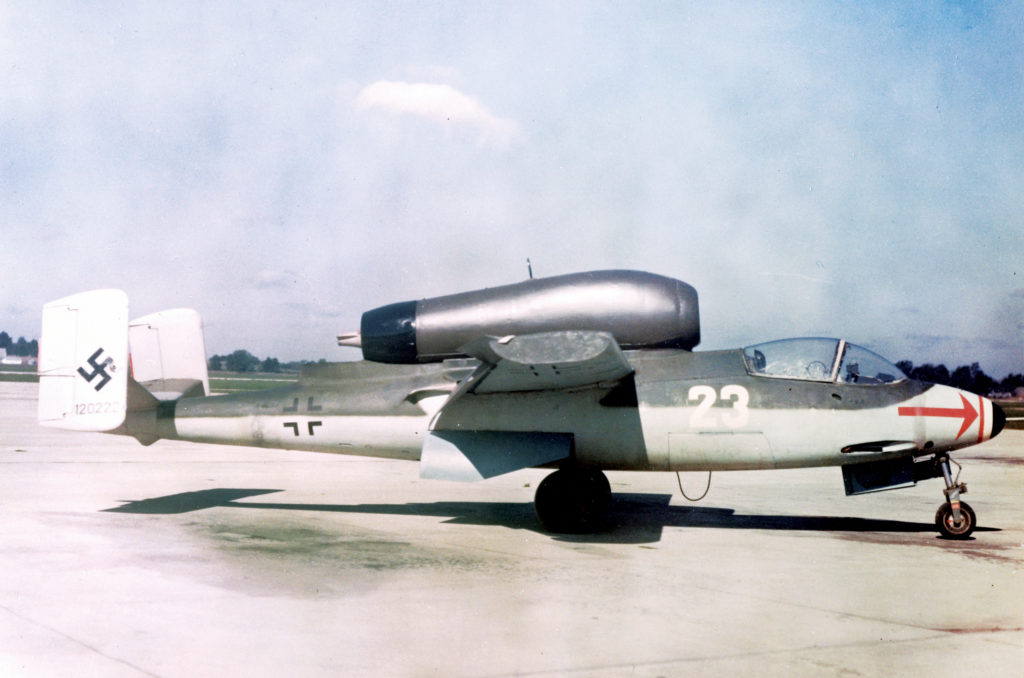
Faced with the need to repel large numbers of Allied bombers in the summer of 1944, Adolf Hitler demanded the development of a “Volksjäger” (“people’s fighter”). It was to be a jet-powered interceptor flown by pilots from the Hitler Youth with only a minimum of training. The aircraft also had to be ready to enter production by January 1, 1945.
Although not judged the best proposal submitted, Ernst Heinkel’s He-162 was selected because it was regarded as the easiest to produce, and because about one-third of the airframe was made of plywood, a “non-strategic material.” Plans were laid to mass-produce the plane in underground factories.
Flight testing, however, revealed serious flaws. The prototype crashed when its wing disintegrated, due both to weak design and defective bonding of the plywood. The wooden structure also flexed in warm weather and became brittle in cold. The plane was found to be unstable in both pitch and yaw, and it could not fly inverted for more than three seconds, or else the engine would stop.
Experienced fighter pilots who flew the He-162 considered it a death trap, and certainly not suitable for half-trained teenage pilots. Regardless, Reichsmarschall Hermann Göring insisted that production go ahead so the first He-162s could re-equip Jagdgeschwader 1. Its commander, Herbert Ihlefeld, simply resolved that all the pilots assigned to him would fail the physical. More than 300 He-162s were eventually built and a few did see combat. Predictably, more were lost in accidents than Allied aircraft were shot down—and even that one ended up being credited to a flak unit instead.
Blackburn B-25 Roc
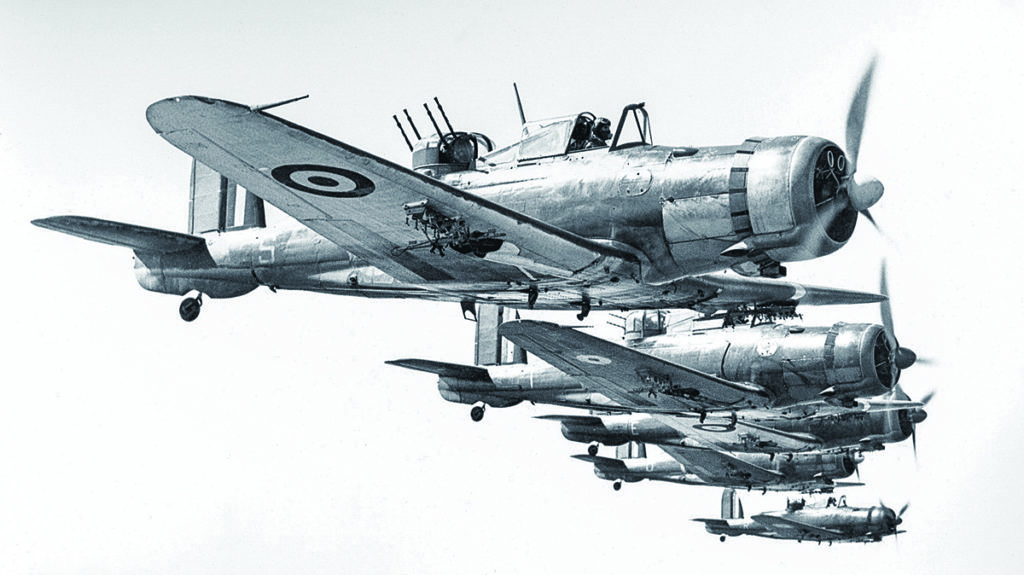
The “turret fighter,” a two-seat, single-engine fighter in which all the armament was placed in a power-driven gun turret, was a concept peculiar to the British and one that is universally accepted to have been misguided. Bad though the RAF’s purpose-built Boulton Paul Defiant turret fighter was, however, the Fleet Air Arm’s carrier-based equivalent, the Blackburn Roc, was unquestionably worse. In an effort to cut costs, the Royal Navy simply installed Boulton Paul’s gun turret in Blackburn’s Skua carrier-based dive-bomber. The performance of the resulting aircraft, dubbed the Roc, was so poor that the FAA would have been better off simply using the Skua as a fighter—which, in fact, it did.
With its turret grafted on as an aerodynamic afterthought, the Roc could achieve only 223 mph, a climb rate of 1,500 feet per minute and a service ceiling of 18,000 feet. The floatplane version of the Roc was even worse, with a top speed of 193 mph and a rate of climb of 1,100 feet per minute. While 136 Rocs were eventually built, they never equipped a fighter squadron nor served aboard a carrier. A handful briefly augmented a couple of Skua squadrons, but none saw any active service. Some Rocs were later converted into target tugs, and a few were placed on airfields to use their turrets as stationary anti-aircraft batteries.
Focke-Wulf Ta-154 Moskito
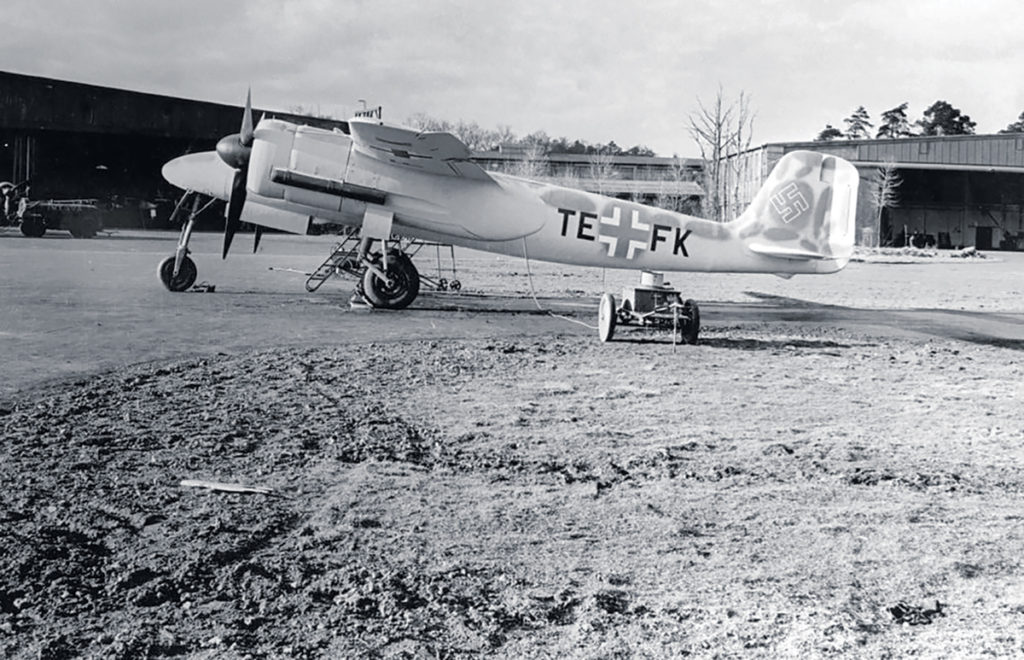
De Havilland’s wooden Mosquito caused consternation when it appeared over Germany. Erhard Milch, who was in charge of German aircraft production, asked Focke-Wulf to develop a similar twin-engine, wooden multi-role aircraft that could serve as a night fighter. Designed by Kurt Tank, who had created the successful Fw-190, the new aircraft was designated Ta-154. The Germans even went so far as to name it the Moskito.
Politics intruded upon the development process. Based upon operational experience, the Luftwaffe wanted the excellent Heinkel He-219 Uhu (“owl”), but Ernst Heinkel had fallen out of political favor with Milch, who preferred the Ta-154. First flown in July 1943, the prototype Ta-154 was tested against the He-219 and the Junkers Ju-388 and outflew them both. The competition, however, was rigged. The Ta-154 was a stripped-down prototype while the other two carried full military equipment, including armament and radar. Adding military equipment reduced the Ta-154’s speed by almost 50 mph.
In June 1944, the Moskito was finally ready for production. Around that time, however, the British bombed the factory that made the special resin required to glue the Ta-154’s wooden airframe together. Another adhesive was substituted, but it proved corrosive to the wooden structure, causing several Ta-154s to break up and crash. Consequently, the Ta-154 was cancelled after production of about only 50 aircraft. Tank was tried for treason but was eventually acquitted. The Luftwaffe came up with a scheme to convert the Ta-154s into explosive-filled drones and blow them up amidst enemy bomber formations, but nothing came of that, and no Ta-154 was ever used operationally.
Recommended for you
Messerschmitt Me-210
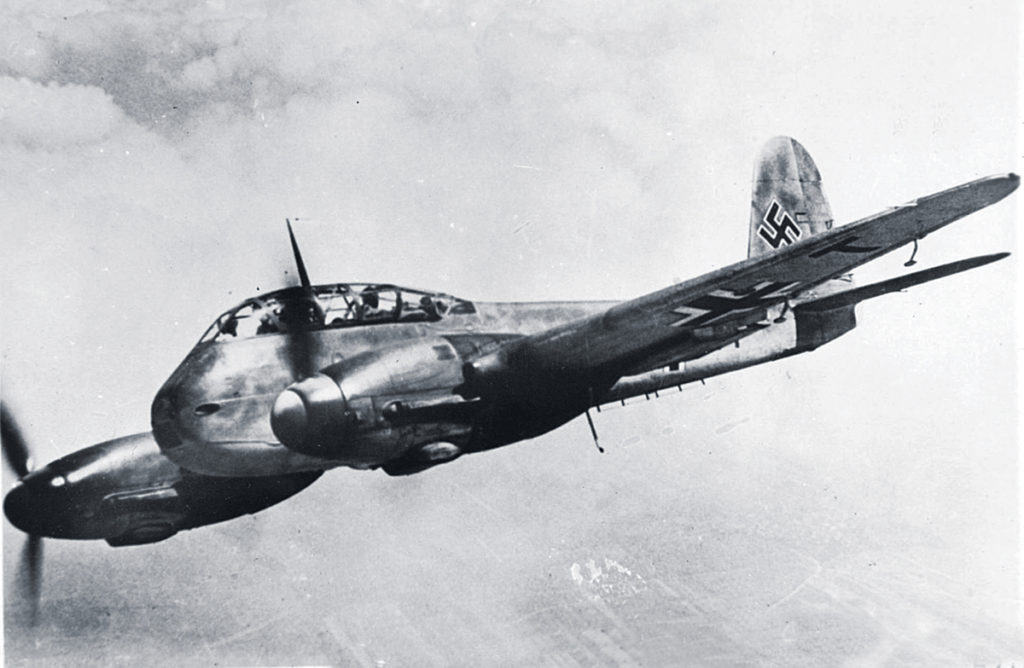
Messerschmitt created the legendary Me-109, unarguably among the best and certainly most-produced fighters of World War II. Messerschmitt also came up with the Me-210, a twin-engine multi-role fighter that was so bad it nearly ruined the reputation the Me-109 had given the company.
The Me-210 was supposed to replace the earlier Me-110 as what the Luftwaffe called a “Zerstörer” (“destroyer”), meaning a twin-engine general-purpose aircraft intended as a long-range escort, fighter/bomber and reconnaissance plane. In 1940, the Me-110 proved vulnerable to British fighters and was more of a liability than an asset. Since 1937, however, Messerschmitt had been working on its replacement. On paper the Me-210 looked so promising that the Luftwaffe ordered 1,000 before the prototype ever even flew.
First flown in September 1939, the Me-210 seemed very advanced. The two crewmen were placed under a bulbous canopy in the nose, where they enjoyed an excellent view. The main armament of two 20mm cannon and two
7.92mm machine guns were mounted beneath the crew stations and a bomb bay was underneath them. Two 13mm machine guns were placed in remotely controlled barbettes, one on each side of the fuselage.
In flight the Me-210 proved unstable, with a dangerous tendency to stall and go into a spin even during routine flight, let alone violent combat maneuvers. The advanced defensive armament system also proved unreliable and difficult to aim accurately. Worse still, the Me-210 did not outperform the existing Me-110, with a top speed of 350 mph, a range of 1,130 miles and a service ceiling of 29,200 feet, compared with the Me-110’s speed of 350 mph, 1,750-mile range and 35,000-foot ceiling. In 1942, after no more than 400 examples were built, the Me-210 was cancelled and the Me-110 retained in production.
The Me-210 was eventually replaced by a similar-looking but much improved fighter that was redesignated the Me-410, probably in an attempt to disassociate it from the disastrous reputation of its forbear. First flown in 1942, the Me-410 incorporated many changes, including a longer fuselage and completely different wing, which finally alleviated the Me-210’s instability problems. Fewer than 1,200 Me-410s were built, however, before production was phased out during 1944 out in favor of single-engine fighters.
Seversky P-35
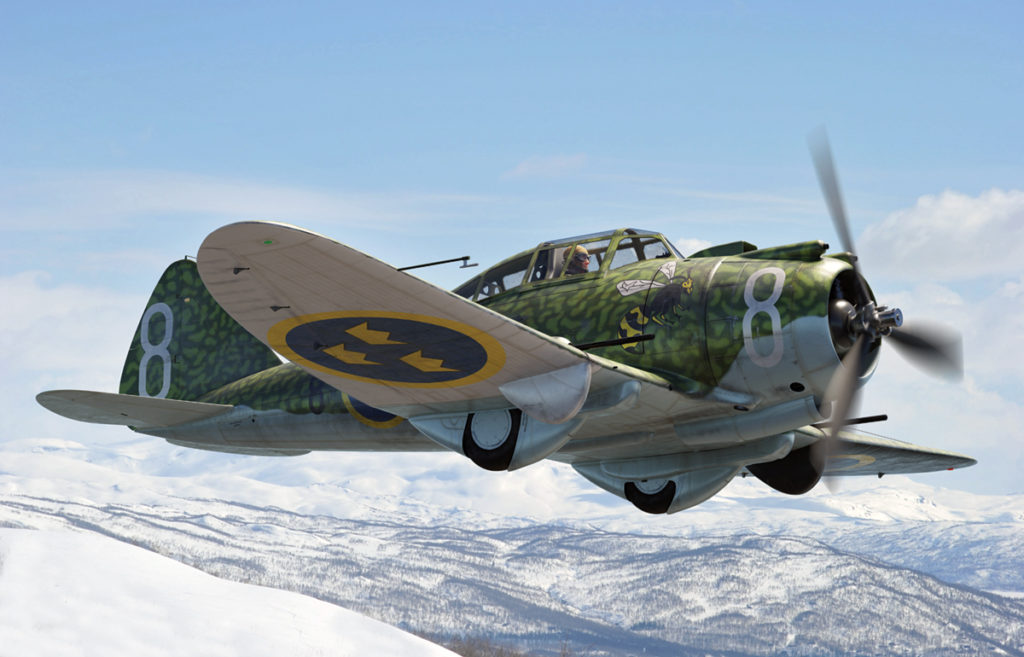
A contemporary of the Hawker Hurricane and Messerschmitt Me-109, the Seversky P-35 was the U.S. Army Air Corps’ first truly modern fighter. It featured an all-metal structure, an enclosed cockpit and retractable landing gear.
It beat the Curtiss P-36 Hawk in competition for a 1936 Army Air Corps fighter contract (although the P-36 was subsequently ordered into production as well). Unlike its British and German contemporaries, however, the P-35 was clearly outdated by the start of World War II. Only 76 P-35s were delivered to the AAC before production was terminated.
After AAC orders ceased, Seversky managed to sell Sweden a further 120 examples of an improved version of the P-35, with a more powerful engine and an armament of two .50-caliber and two .30-caliber machine guns. The Swedish air force received 60 of these J 9s, as it called them, and operated them until 1946, but the remaining 60 were seized by the United States in an embargo. Designated P-35A by the AAC, 51 of the ex-Swedish J 9s were sent to the Phil-ippines in 1941.
The P-35As constituted a major portion of the AAC’s air defense assets in the Philippines in December 1941. Apart from being already obsolete, the fighters arrived in the Philippines still crated for delivery to Sweden. That meant that the instruction and maintenance manuals were in Swedish and the flight instruments were calibrated in metric. In addition, .50-caliber machine gun ammunition was in short supply. There were also no spare parts for the engines, which were commercial versions of the Pratt & Whitney Twin Wasp intended for export. Lacking armor and self-sealing fuel tanks and outclassed in performance and armament by contemporary Japanese fighters, only five P-35As were still operational by January 1942. Incredibly, the last surviving P-35A, flown by a Filipino pilot, was shot down on May 3, 1942, while attempting to strafe Japanese troops who were landing at Macajalar Bay.
Outdated though the P-35 was, Seversky’s design made an impact. Republic developed it into the P-43 and then the formidable P-47 Thunderbolt. In Italy, Reggiane refined it into the Re.2000 series. Hungary bought Re.2000s for use over Russia and later built its own version, the MÁVAG Héja (“falcon”) II, with a Weiss Manfred WM-14 in place of the Piaggio engine. The latter’s combat debut — and finale — came on April 13, 1944, when Héja IIs from the 1st Squadron, 2nd Fighter Group went up to challenge a U.S. Fifteenth Air Force bombing raid. One was shot down by Lockheed P-38s of the 1st Fighter Group and two more by distant relatives, P-47Ds of the 325th Fighter Group. All the pilots survived, but the Hungarians got the message and relegated all their Héjas to the fighter training role thereafter.
Robert Guttman is a regular contributor to Aviation History. For further reading he recommends “Rare Birds: Forgotten Aircraft of the Second World War” by Charles R. G. Bain, and “The World’s Worst Aircraft” by Jim Winchester.
historynet magazines
Our 9 best-selling history titles feature in-depth storytelling and iconic imagery to engage and inform on the people, the wars, and the events that shaped America and the world.


